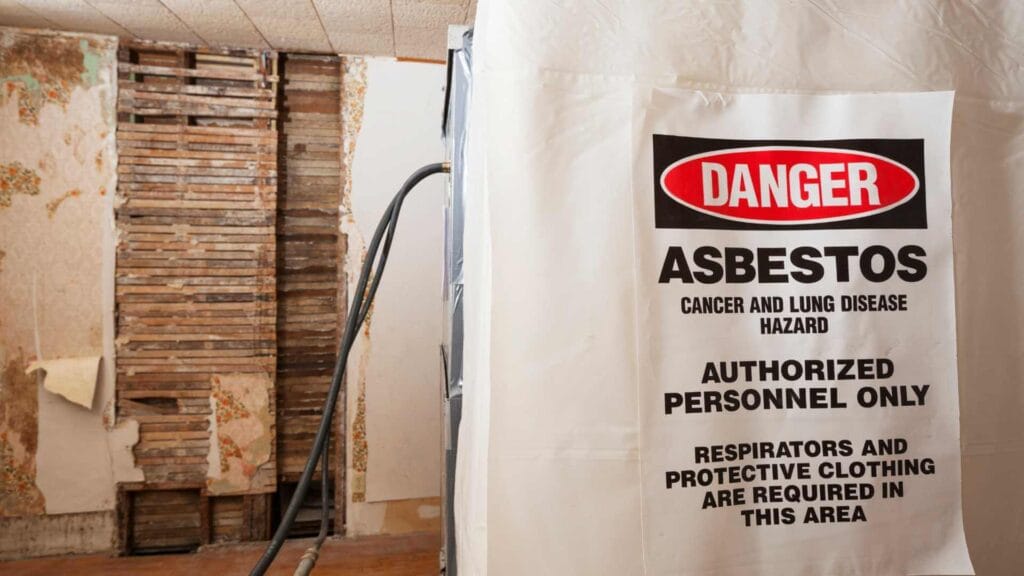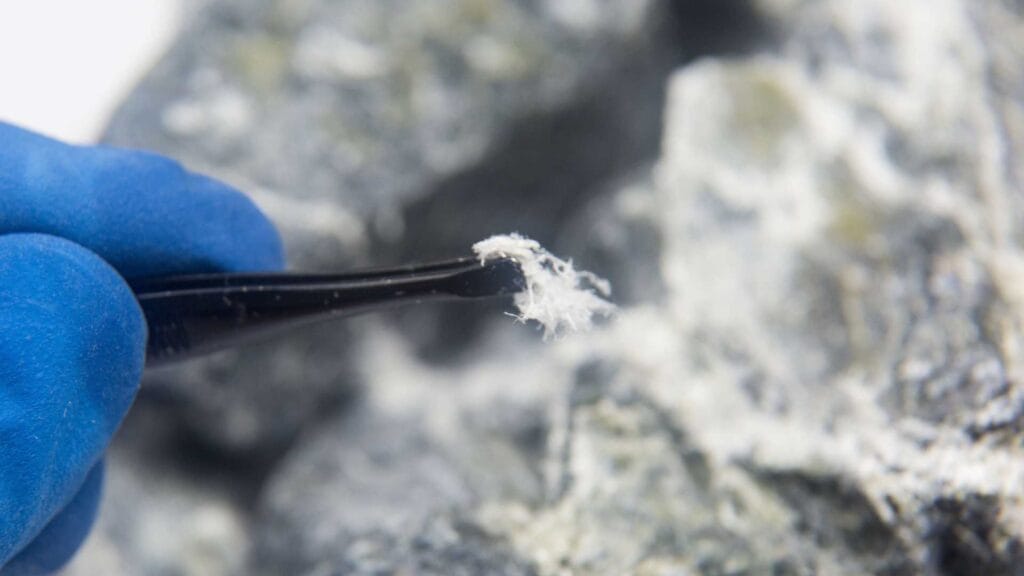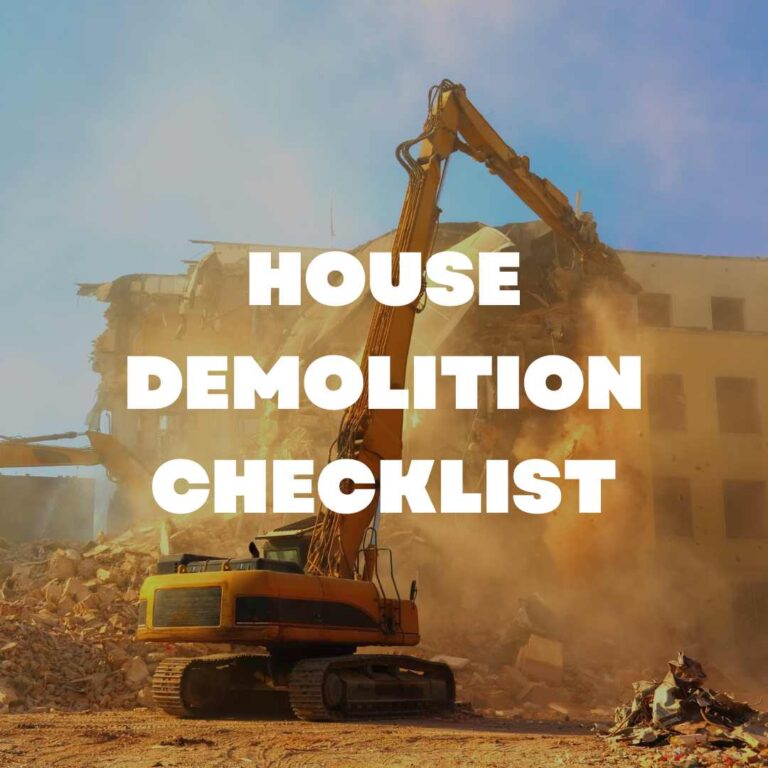Can you test for asbestos yourself? Yes, you can use a DIY kit to test for asbestos, but it requires caution. Disturbing asbestos can release toxic fibers into the air, leading to severe health risks like lung cancer, mesothelioma, and asbestosis. For large or risky areas, hiring a professional asbestos inspector is the safest choice. However, DIY testing can be cost-effective if you follow safety guidelines.
At Pro House Demolitions Brisbane, we specialise in professional asbestos removal and full house demolitions, ensuring your home is handled safely and efficiently. If your property was built before the 1980s, it may contain asbestos in materials such as insulation, vinyl tiles, or textured ceilings. To keep your family safe, we recommend careful testing to confirm the presence of asbestos. Below, we’ll guide you on how to safely test for asbestos at home and when to consider professional services.
Table of Contents
ToggleWhat Is Asbestos and Why Was It Banned?

Asbestos is a fibrous mineral once widely used in building materials between the 1940s and 1970s. It was valued for its heat resistance and fireproofing abilities. Unfortunately, exposure to asbestos fibers can cause serious diseases:
- Asbestosis: Scarring of the lungs leading to breathing difficulties.
- Mesothelioma: A rare cancer affecting the lining of the chest or abdomen.
- Lung Cancer: Increased risk due to prolonged asbestos exposure, especially for smokers.
Despite its dangers, asbestos wasn’t fully banned in Australia until 2003. Many asbestos-containing materials (ACMs), like vermiculite insulation, are still found in homes today. While asbestos can remain undamaged for years, renovation work or aging materials can cause friable asbestos (easily crumbled materials) to release dangerous fibers.
Common Places Where You May Find Asbestos in Your Home
Asbestos is likely present if your home was built before the 1980s. Even newer homes may contain asbestos if old materials were reused or imported products were involved. Common places to look for asbestos include:
- Ceilings: Popcorn ceilings or textured paint
- Vermiculite Insulation: Found in walls or attics
- Vinyl Floor Tiles and Adhesives
- Roofing Shingles and Flashing
- Boilers, Pipe Wraps, and HVAC Insulation
- Asbestos Paper or Cement Sheets: Used near fireplaces
You can’t tell by looking whether a material contains asbestos. The only way to confirm its presence is through a kit or professional inspection.
DIY Asbestos Testing vs. Professional Inspection
When to Use DIY Kits
DIY asbestos testing kits are available online and in hardware stores. They guide you through collecting samples from suspected areas and sending them to a laboratory for analysis. A National Association of Testing Authorities (NATA)-certified lab will ensure accurate results. But before that, it is important to understand the key signs of asbestos in your home before using a DIY kit.
Pros of DIY Testing Kits:
- Affordable (prices range from $50 to $100 AUD)
- Useful for small, isolated areas (e.g., floor tiles)
- Quick sample collection and lab submission
Cons:
- Health risks if fibers are disturbed during sample collection
- Limited to testing solid samples (can’t detect airborne asbestos)
- Some states restrict DIY testing, requiring homeowners to hire certified inspectors
When to Hire a Professional Inspector
Hire a professional asbestos inspector if you’re dealing with multiple areas or planning a major renovation. Inspectors are trained to identify asbestos, collect samples safely, and conduct asbestos air testing to check for airborne contamination.
- Cost: Professional asbestos testing ranges from $225 to $800 AUD.
- Air Testing: May cost around $500 AUD.
- Report: If asbestos is present, the inspector will provide a detailed report with recommendations for removal or encapsulation.

Step-by-Step Guide: How to Test for Asbestos Safely at Home
If you decide to use a kit for DIY asbestos testing, follow these steps carefully to avoid exposure.
Step 1: Gather the Right Tools and Equipment
Personal Protective Equipment (PPE):
- Respirator mask with HEPA filter
- Disposable coveralls
- Gloves and safety glasses
- Plastic sheeting to seal off the area
- Spray bottle with water and dish soap
Step 2: Seal the Area
Use plastic sheeting to seal doorways and vents. This prevents fibers from escaping into other areas. Turn off HVAC systems to reduce airflow.
Step 3: Wet the Material
Spray the sample area with water and soap to minimize the release of fibers. This keeps asbestos fibers from becoming airborne.
Step 4: Collect Samples Safely
Use a knife or scissors to carefully cut a small piece of the material (about the size of a coin). If collecting dust samples, use a damp tissue to wipe the area and seal it in a sample bag.
Step 5: Send Samples to the Lab
Follow the instructions in your kit and send the sample to a certified laboratory. Expect results within 7 to 14 days. Some labs offer expedited results within 24 to 48 hours for an extra fee.
What to Do if Your Home Has Asbestos
If the test results confirm the presence of asbestos, you have two options:
1. Encapsulation
Seal the asbestos to prevent it from becoming airborne. This is a good option for materials in undamaged condition.
2. Asbestos Removal
If the asbestos is friable or will be disturbed during renovations, professional removal is required.
Never attempt to remove asbestos yourself—it’s illegal and highly dangerous. Always use a certified asbestos removal company to ensure safe handling.
Signs and Symptoms of Asbestos Exposure
Asbestos exposure can cause severe diseases that may take years to develop. Early signs and symptoms include:
- Persistent cough
- Shortness of breath
- Wheezing and chest tightness
- Pain in the chest or shoulders
If you experience these symptoms, seek medical advice immediately. Prolonged exposure to asbestos fibers increases the risk of lung cancer, asbestosis, and mesothelioma.
Legal Considerations and Insurance Coverage in Australia
There are no national laws requiring homeowners to disclose asbestos when selling. However, some states may have additional regulations. If you’re planning renovations, you may need to apply for inspection and asbestos clearance before starting work.
Most insurance policies won’t cover asbestos removal unless the contamination was caused by a covered event. Check your policy details for exclusions. Learn how long asbestos removal takes to meet legal and insurance requirements.
What’s Next?
If your home has asbestos, don’t risk your health by handling it yourself. At Pro House Demolitions Brisbane, we offer professional asbestos removal and inspection services, along with full house demolitions.
Our certified experts will ensure your home is asbestos-free and safe for your family. Get in touch today to schedule an inspection or consultation.
Frequently Asked Questions
Can a single exposure to asbestos cause health risks?
Yes, even brief exposure can lead to asbestos-related diseases, though symptoms may take years to appear.
Are DIY asbestos kits reliable?
DIY kits are effective for small areas, but professional asbestos testing is recommended for larger inspections or air testing.
What should I do if I accidentally disturb asbestos?
Leave the area immediately, seal it off, and contact a certified asbestos inspector.




